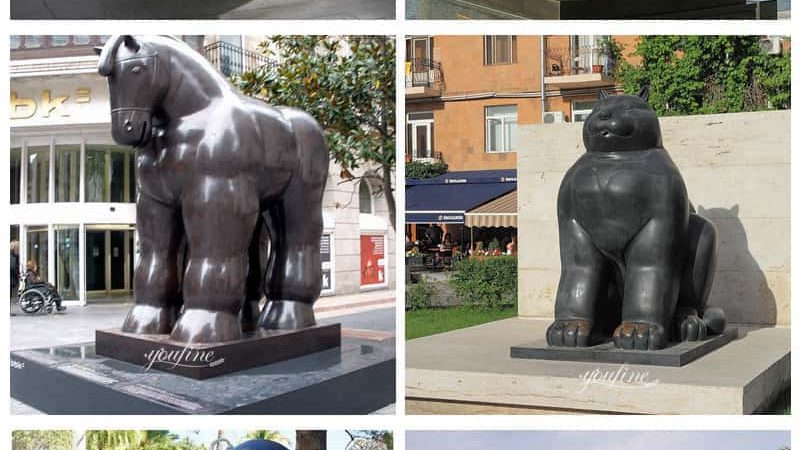A Journey Through Mandala Art Wonders

Welcome to a journey of discovery through the beautiful and intricate world of mandala art. In this article, we will explore the history of mandalas, their symbolism and their spiritual significance, as well as discuss their use in modern art. We will look at how to create your own mandala art, and how to use it to relax, meditate and bring peace into your life. So come along as we embark on a journey of exploration into this fascinating and mysterious art form.
Introduction: What is Mandala Art and its significance?
Mandala art is a form of spiritual and ritual symbolism, typically used in Hindu and Buddhist cultures. It is a representation of the universe and is traditionally used as a form of meditation and spiritual reflection. In its simplest form, it is a geometric pattern that is used to represent the cosmos metaphysically or symbolically. The term ‘Mandala’ is derived from the Sanskrit word for ‘circle’ and is often used to describe any type of symbolic design or pattern.
The purpose of mandala art is to symbolize the connection between the physical world and the spiritual world. It is believed to bring balance and harmony to the individual and to the universe. It has been used for centuries as a way of connecting with the divine and as a means of meditation and contemplation. Mandalas are often seen as a visual representation of the universe, as they contain all the elements of the cosmos in one design. They can also be used to symbolize the human experience and to bring insight into our lives.
Mandala art is believed to be an important part of spiritual development and growth. It is used to help individuals to focus their thoughts and to bring clarity to their spiritual journey. It can be used to connect to the divine and to help bring understanding to the physical world. Mandalas are also believed to bring about healing, both physically and spiritually, and can help bring balance to the individual.
Mandala art is a powerful tool for spiritual growth and healing. It can be used to connect to the divine and to bring insight into our lives. It is a visual representation of the universe and it can help bring balance and harmony to the individual. Its purpose is to help individuals to focus their thoughts and to bring clarity to their spiritual journey.
History of Mandala Art: Origin and Evolution
The history of Mandala Art is as old as the beginning of human civilization. It is believed to have originated in India, over 4000 years ago. It is believed to have been used primarily for spiritual and ritual purposes by various cultures across the world. The word “mandala” itself means “circle” in Sanskrit, and it is thought that the circle symbolized the cosmic order in the universe.
Mandala Art has evolved from being a spiritual symbol to being used as a form of meditation, and also as an artistic expression. It is often associated with Buddhism, Hinduism, and other Eastern religions, although it is also used in the West as a form of art therapy and meditation. Mandala Art has several distinct characteristics, including intricate patterns and shapes, vibrant colors, and often times, a central focal point.
The evolution of Mandala Art over the centuries has been remarkable. It has been used in various religious contexts, and it has also been used as a form of meditation and art therapy. It has been used to express emotions and ideas, and to create a sense of harmony and balance in the viewer. Mandala Art has been adapted to various cultures and contexts, and it remains an important part of many spiritual and artistic practices around the world
Types of Mandalas: Traditional and Modern Mandalas
Mandalas have long been a symbol of balance, harmony, and peace. Mandalas come in many different forms, including traditional and modern. Traditional Mandalas are often used in religious ceremonies and are often circular in shape, with intricate patterns that often represent spiritual and religious teachings.
Modern Mandalas are often more abstract in design, and can take the form of anything from intricate geometrical patterns to abstract shapes and figures.
They often represent inner balance, harmony, and order, and are used in many different contexts, including as art, meditation aids, and even as a form of therapy. Whether traditional or modern, Mandalas are a powerful tool for helping to bring balance and order to our lives.
Symbology of Mandala Art: Meaning of Symbols and Shapes
Mandalas are a form of sacred art that originated in India and are now gaining popularity around the world. The word “mandala” comes from the Sanskrit for “circle” and is often used to refer to a circular painting or pattern. Mandalas have a deep, symbolic meaning and are used for a variety of purposes, from meditation to decoration. The symbols and shapes in mandala art can represent many different things, from the divine to the everyday.
The circle at the center of the mandala is often said to represent the Universe or the Divine and can be thought of as a symbol of wholeness and interconnectedness. The circle can also be seen as a representation of the cycle of life, death, and rebirth. The concentric circles and squares that surround the center of the mandala are often thought to represent the many different aspects of the Universe and how they are all interconnected. The points and lines that make up the mandala represent the different paths and possibilities that we can take in life.
The colors used in mandala art also have a deep symbolic meaning. Colors such as red and orange are often associated with passion, strength, and courage, while green and blue are associated with peace and tranquility. The colors used in a mandala will depend on the purpose of the mandala and can be used to evoke certain emotions and energies.
Mandalas can be used for many different purposes, from meditation and spiritual practice to decoration and self-expression. When looking at a mandala, it’s important to remember the meaning of the symbols and shapes and to use them thoughtfully. The symbols in mandala art can be used to represent the divine, the world around us, and our journey through life.
Mandala Art Techniques: Creating Your Own Mandala Artworks
Creating your own mandala artworks is an incredibly rewarding experience. Whether you’re looking for a creative outlet to express yourself, or just a fun way to pass the time, mandala art is an ideal choice. Mandalas are circular designs that often contain intricate patterns and symbols, and have origins in spiritual and religious practices. Crafting your own is a great way to explore your creative side and get in touch with your spiritual side.
When it comes to creating mandala art, there are a few different techniques you can try. One of the most popular is to draw circles within circles, gradually filling them with intricate patterns and symbols. You can also use a compass to draw circles, and then use ruler and protractor to draw lines throughout the interior and exterior of the circles. Another technique is to use a grid to draw a symmetrical design, which can then be filled with patterns and symbols. Finally, you can use a template or tracing paper to create the mandala, then add patterns and symbols of your own.
No matter which technique you choose, creating a mandala is an incredibly rewarding experience. It can take some practice to get the process down, but the end result is worth the effort. Plus, it’s a great way to explore your creative side and get in touch with your spiritual side. So, if you’re looking for a unique way to express yourself, why not give mandala art a try?
Benefits of Mandala Art: Stress Relief, Self-Awareness and Meditation
Mandala art offers a unique and powerful way for individuals to reduce stress, cultivate self-awareness, and practice meditation. Mandala art is a form of art therapy that is often used as a tool for relaxation and self-reflection.
It involves creating a circular design composed of various shapes, lines, and colors that can be used to represent one’s inner feelings and thoughts. By engaging in the creative process of creating a mandala, individuals can gain insight into their emotional and mental states, as well as gain a sense of calm and relaxation.
The act of creating a mandala can be used to reduce stress and anxiety, as it provides a sense of control and empowerment. It can also help to cultivate self-awareness, as it allows individuals to explore their inner thoughts and feelings.
Furthermore, creating a mandala can be used as a form of meditation, as it helps to focus one’s attention on the creative process and away from other distractions. All in all, mandala art provides a powerful and unique way to reduce stress, cultivate self-awareness, and practice meditation.
Tools Used to Create Mandala Art: Pencils, Paintbrushes and Other Materials
Creating a mandala art piece can be a very rewarding experience, and there are a variety of tools that can be used to create your masterpiece. Pencils are often the most popular choice, as they allow for intricate details and quick corrections. Pencils of various shapes and sizes are available, and it is important to choose the right one for your particular project. Paintbrushes are also a viable option, as they provide the artist with more freedom when it comes to blending colors and creating different textures. Other materials to consider include colored pencils, markers, crayons, and watercolors.
The type of materials used will depend on the desired outcome. Some artists prefer to use a combination of tools to achieve a unique look. For example, one might use pencils for the finer details and paints for larger sections. The use of mixed media can also help to create interesting effects. Experimentation and practice are key, as it is important to understand the properties of each material and how they interact with one another.
Mandala art is a great way to express one’s creativity, and the tools used to create a mandala can be just as important as the design itself. With the right materials and a bit of practice, anyone can create a beautiful and unique piece of art.
Where to Find Mandala Art: Online Resources and Art Galleries
If you are looking for mandala art, you are in luck! There are many online resources available that showcase a variety of mandala art. Websites such as Etsy and Society6 offer an array of mandala artwork, ranging from traditional to modern. Additionally, websites such as Artful Home and Saatchi Art offer more exclusive and limited edition mandala art pieces. Other online resources include Instagram and Facebook, which have a number of talented artists displaying their mandala art, many of which you can purchase directly from the artist.
In addition to online resources, you can also find mandala art at art galleries. Art galleries often feature mandala art in the form of paintings, sculptures, and digital pieces. Visiting an art gallery is a great way to view and purchase mandala art in person. You can also find mandala art pieces at local craft and gift stores, which are often more affordable options.
No matter where you find your mandala art, be sure to do your research before making any purchases. Make sure to inquire about the artist’s background, the materials used, and the quality of the artwork. With so many resources available, you are sure to find the perfect mandala art piece for your home or collection.
Where to Find Mandala Art: Online Resources and Art Galleries
If you are looking for mandala art, you are in luck! There are many online resources available that showcase a variety of mandala art. Websites such as Etsy and Society6 offer an array of mandala artwork, ranging from traditional to modern. Additionally, websites such as Artful Home and Saatchi Art offer more exclusive and limited edition mandala art pieces. Other online resources include Instagram and Facebook, which have a number of talented artists displaying their mandala art, many of which you can purchase directly from the artist.
In addition to online resources, you can also find mandala art at art galleries. Art galleries often feature mandala art in the form of paintings, sculptures, and digital pieces. Visiting an art gallery is a great way to view and purchase mandala art in person. You can also find mandala art pieces at local craft and gift stores, which are often more affordable options.
No matter where you find your mandala art, be sure to do your research before making any purchases. Make sure to inquire about the artist’s background, the materials used, and the quality of the artwork. With so many resources available, you are sure to find the perfect mandala art piece for your home or collection.
Famous Mandala Art Examples: Examples of Famous Mandala Artworks
Mandala art is a form of art that has been around for centuries and is still popular today. Mandala art is a form of spiritual and ritual symbol in Hindu and Buddhist cultures that is used to represent the universe. The term “mandala” comes from the Sanskrit meaning “circle” and it is believed to represent the universe in its entirety. Mandala art is often used to represent the cycle of life, the interconnectedness of all things, and the harmony of the universe. Examples of famous mandala artworks include the works of artists such as Gustav Klimt, Georgia O’Keeffe, and M.C. Escher.
Gustav Klimt’s The Tree of Life is a prime example of mandala art. The painting is a circular composition with a central tree, surrounded by a series of concentric rings and figures. This painting is said to represent the interconnectedness of life and the cyclical nature of existence.
Georgia O’Keeffe’s Star Flower is another example of mandala art. This painting features an intricately patterned flower surrounded by a series of concentric circles and shapes. This painting is said to represent the interconnectedness of all life and the unity of the universe.
M.C. Escher’s Metamorphosis III is a prime example of mandala art. This painting features a series of interconnected shapes and figures that form a mandala-like pattern. This painting is said to represent the interconnectedness of all things and the cyclical nature of life.
These are just a few examples of famous mandala artworks.
- Mandala art is a beautiful and intricate form of art that has been around for centuries and still continues to be popular today
- . It is a form of art that celebrates the interconnectedness of all things and the harmony of the universe.
Conclusions,
Mandala art is a beautiful and powerful form of expression that has been used by cultures around the world for centuries. While the traditional designs are intricate and complex, modern interpretations of the art form can range from simple to complex.
By exploring the different styles of mandala art, we can appreciate the beauty of this ancient form of expression and gain insight into the cultures and beliefs of various cultures.
Whether you are an experienced artist or a novice, exploring mandala art is a wonderful way to gain a deeper understanding of this art form and its many meanings.






